Io Over Jupiter From Voyager 1

NASA Astronomy Picture of the Day 2016 September 4
Io over Jupiter from Voyager 1
Back in 1979, NASA’s Voyager 1 spacecraft flew past Jupiter and its moons. The images in this mosaic, featuring the moon Io against a background of gas giant Jupiter’s diffuse swirling cloud bands, were recorded by Voyager’s camera from a distance of about 8.3 million kilometers. The Io image from this mosaic may be the first to show curious round features on Io’s surface with dark centers and bright rims more than 60 kilometers across. Now known to be volcanic in origin, these features were then thought likely to be impact craters, commonly seen on rocky bodies throughout the Solar System. But as Voyager continued to approach Io, close-up pictures revealed a bizarre world devoid of impact craters, frequently resurfaced by volcanic activity. Earlier this year a new robotic spacecraft, NASA’s Juno, began to orbit Jupiter and last week made a pass within 5,000 kilometers of Jupiter’s clouds. During the next two years, it is hoped that Juno will discover new things about Jupiter, for example what’s in Jupiter’s core.
More Posts from Curiositytherover and Others

Staring at the sun does make you go blind. The lens in your eye concentrates the sun’s rays, which burn a permanent blind spot into your retina- just like ants under a magnifying glass. This effect is amplified during a solar eclipse.
It’s called solar retinopathy.
Source

Is the End of Daily Insulin Injections for Diabetes Sufferers in Sight?
A new study reportedly shows that boosting the immune system can safely restore insulin production for up to a year—which might make it possible for those who suffer with diabetes to not require daily injections. Notably, these are Phase 1 trials, which are designed to look at safety, not long term effectiveness. So much research is still needed.
Yet, if the technique proves viable and effective, this could change the lives of millions of people around the world. According to the Center for Diseases Control, in the United States alone, 29.1 million people (or 9.3% of the population) have diabetes. That’s one out of every 11 people. 371 million people worldwide have this condition.
To break down the research, those afflicted with Type 1 diabetes do not have enough T-regs or ‘peacekeeping’ cells, which is ultimately what causes the disease. Researchers from Yale and University of California have just showed that T-regs can be removed from the body, increased by 1,500 in a lab setting, and then placed back into the bloodstream as a way of potentially restoring the body’s insulin production back to normal.
Find out more at: http://futurism.com/links/end-daily-insulin-injections-diabetes-sufferers-sight/
Synthetic Muscles
Huntsville AL (SPX) Dec 31, 2015 Muscles are miracles of nature. They convert energy into motion more efficiently than any gasoline engine or electric motor. They’re extremely resilient and even heal themselves. Instead of degrading with use, our muscles become stronger the more we work them. Researchers have long sought a way to recreate that miracle in prosthetics. So far, no one has succeeded. But Lenore Rasmussen, Pri Full article


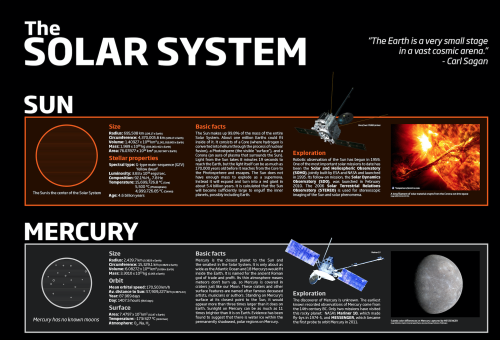
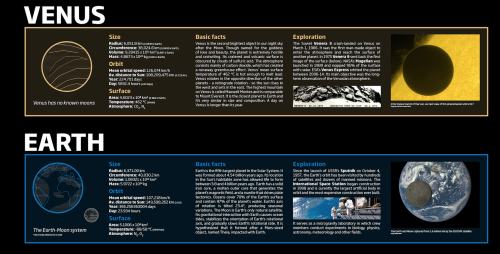
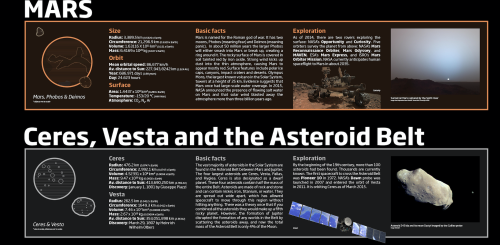
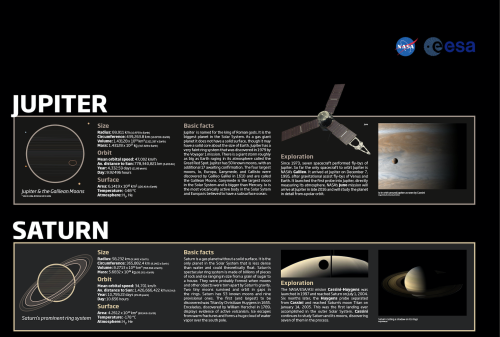
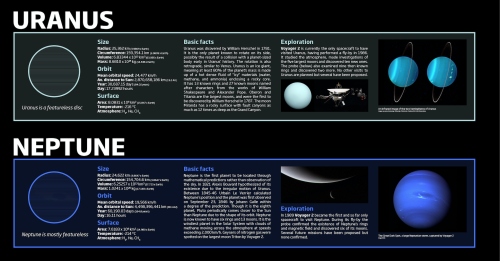

The Solar System

Inhabitat’s Week in Green: Tesla Model S recall, and more!
PSYCHOLOGY FACT #27
Seeing others positively reveals our positive traits, seeing others negatively reveals our negative traits.
Keep reading
We’re With You When You Fly

Did you know that “We’re With You When You Fly”? Thanks to our advancements in aeronautics, today’s aviation industry is better equipped than ever to safely and efficiently transport millions of passengers and billions of dollars worth of freight to their destinations. In fact, every U.S. Aircraft flying today and every U.S. air traffic control tower uses NASA-developed technology in some way. Here are some of our objectives in aeronautics:
Making Flight Greener

From reducing fuel emissions to making more efficient flight routes, we’re working to make flight greener. We are dedicated to improving the design of airplanes so they are more Earth friendly by using less fuel, generating less pollution and reducing noise levels far below where they are today.
Getting you safely home faster

We work with the Federal Aviation Administration to provide air traffic controllers with new tools for safely managing the expected growth in air traffic across the nation. For example, testing continues on a tool that controllers and pilots can use to find a more efficient way around bad weather, saving thousands of pounds of fuel and an average of 27 minutes flying time per tested flight. These and other NASA-developed tools help get you home faster and support a safe, efficient airspace.
Seeing Aviation’s Future

Here at NASA, we’re committed to transforming aviation through cutting edge research and development. From potential airplanes that could be the first to fly on Mars, to testing a concept of a battery-powered plane, we’re always thinking of what the future of aviation will look like.
Make sure to follow us on Tumblr for your regular dose of space: http://nasa.tumblr.com

Report: A host of common chemicals endanger child brain development
In a new report, dozens of scientists, health practitioners and children’s health advocates are calling for renewed attention to the growing evidence that many common and widely available chemicals endanger neurodevelopment in fetuses and children of all ages.
The chemicals that are of most concern include lead and mercury; organophosphate pesticides used in agriculture and home gardens; phthalates, which are used in pharmaceuticals, plastics and personal care products; flame retardants known as polybrominated diphenyl ethers; and air pollutants produced by the combustion of wood and fossil fuels, said University of Illinois comparative biosciences professor Susan Schantz, one of dozens of individual signatories to the consensus statement.
Polychlorinated biphenyls, once used as coolants and lubricants in transformers and other electrical equipment, also are of concern. PCBs were banned in the U.S. in 1977, but can persist in the environment for decades, she said.
The new report, “Project TENDR: Targeting Environmental NeuroDevelopment Risks,” appears in the journal Environmental Health Perspectives. The group also has a website with information about each of the chemicals of concern.
“These chemicals are pervasive, not only in air and water, but in everyday consumer products that we use on our bodies and in our homes,” Schantz said. “Reducing exposures to toxic chemicals can be done, and is urgently needed to protect today’s and tomorrow’s children.”
Schantz is a faculty member in the College of Veterinary Medicine and in the Beckman Institute for Advanced Science and Technology at the U. of I.
“The human brain develops over a very long period of time, starting in gestation and continuing during childhood and even into early adulthood,” Schantz said. “But the biggest amount of growth occurs during prenatal development. The neurons are forming and migrating and maturing and differentiating. And if you disrupt this process, you’re likely to have permanent effects.”
Some of the chemicals of concern, such as phthalates and PBDEs, are known to interfere with normal hormone activity. For example, most pregnant women in the U.S. will test positive for exposure to phthalates and PBDEs, both of which disrupt thyroid hormone function.
“Thyroid hormone is involved in almost every aspect of brain development, from formation of the neurons to cell division, to the proper migration of cells and myelination of the axons after the cells are differentiated,” said Schantz. “It regulates many of the genes involved in nervous system development.”
Schantz and her colleagues at Illinois are studying infants and their mothers to determine whether prenatal exposure to phthalates and other endocrine disruptors leads to changes in the brain or behavior. This research, along with parallel studies in older children and animals, is a primary focus of the Children’s Environmental Health Research Center at Illinois, which Schantz directs.
Phthalates also interfere with steroid hormone activity. Studies link exposure to certain phthalates with attention deficits, lower IQ and conduct disorders in children.
“Phthalates are everywhere; they’re in all kinds of different products. We’re exposed to them every day,” Schantz said.
The report criticizes current regulatory lapses that allow chemicals to be introduced into people’s lives with little or no review of their effects on fetal and child health.
“For most chemicals, we have no idea what they’re doing to children’s neurodevelopment,” Schantz said. “They just haven’t been studied.
“And if it looks like something is a risk, we feel policymakers should be willing to make a decision that this or that chemical could be a bad actor and we need to stop its production or limit its use,” she said. “We shouldn’t have to wait 10 or 15 years – allowing countless children to be exposed to it in the meantime – until we’re positive it’s a bad actor.”
-
 morby reblogged this · 5 years ago
morby reblogged this · 5 years ago -
 morby liked this · 5 years ago
morby liked this · 5 years ago -
 dailymusemaniac liked this · 5 years ago
dailymusemaniac liked this · 5 years ago -
 et-rex liked this · 5 years ago
et-rex liked this · 5 years ago -
 doublespiritofcreations liked this · 5 years ago
doublespiritofcreations liked this · 5 years ago -
 kwyttnsstuff liked this · 5 years ago
kwyttnsstuff liked this · 5 years ago -
 saltythexfilesindianjonescop liked this · 5 years ago
saltythexfilesindianjonescop liked this · 5 years ago -
 blaze2fussion33 liked this · 5 years ago
blaze2fussion33 liked this · 5 years ago -
 i-was-supposed-to-have-a-twin liked this · 5 years ago
i-was-supposed-to-have-a-twin liked this · 5 years ago -
 16fahri liked this · 6 years ago
16fahri liked this · 6 years ago -
 fagdykefrank liked this · 6 years ago
fagdykefrank liked this · 6 years ago -
 naukishtae liked this · 6 years ago
naukishtae liked this · 6 years ago -
 peri-crone-al liked this · 6 years ago
peri-crone-al liked this · 6 years ago -
 daemondamian liked this · 6 years ago
daemondamian liked this · 6 years ago -
 yggdrasmadri liked this · 6 years ago
yggdrasmadri liked this · 6 years ago -
 xxfr0stb1tt3n-cl0v3rsxx liked this · 6 years ago
xxfr0stb1tt3n-cl0v3rsxx liked this · 6 years ago -
 rickcd67 liked this · 6 years ago
rickcd67 liked this · 6 years ago -
 blue---oak liked this · 6 years ago
blue---oak liked this · 6 years ago -
 nuclearvampire reblogged this · 8 years ago
nuclearvampire reblogged this · 8 years ago -
 velvet-bat reblogged this · 8 years ago
velvet-bat reblogged this · 8 years ago -
 velvet-bat reblogged this · 8 years ago
velvet-bat reblogged this · 8 years ago -
 teeniechoppa reblogged this · 8 years ago
teeniechoppa reblogged this · 8 years ago -
 such-cartography reblogged this · 8 years ago
such-cartography reblogged this · 8 years ago -
 such-cartography liked this · 8 years ago
such-cartography liked this · 8 years ago -
 andromeda-reinvented liked this · 8 years ago
andromeda-reinvented liked this · 8 years ago -
 squirrelbread reblogged this · 8 years ago
squirrelbread reblogged this · 8 years ago -
 squirrelbread liked this · 8 years ago
squirrelbread liked this · 8 years ago -
 hatbot reblogged this · 8 years ago
hatbot reblogged this · 8 years ago -
 hatbot liked this · 8 years ago
hatbot liked this · 8 years ago -
 mar-umi reblogged this · 8 years ago
mar-umi reblogged this · 8 years ago -
 solar-sailing reblogged this · 8 years ago
solar-sailing reblogged this · 8 years ago -
 nightingalelost liked this · 8 years ago
nightingalelost liked this · 8 years ago -
 sleepyteal reblogged this · 8 years ago
sleepyteal reblogged this · 8 years ago -
 hextrudedcubes liked this · 8 years ago
hextrudedcubes liked this · 8 years ago -
 annamonapia liked this · 8 years ago
annamonapia liked this · 8 years ago -
 nuclearcarrots reblogged this · 8 years ago
nuclearcarrots reblogged this · 8 years ago -
 ilgraham18 liked this · 8 years ago
ilgraham18 liked this · 8 years ago